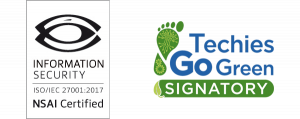As businesses strive to remain competitive and grow, they are often faced with the challenge of meeting compliance requirements while maintaining their operational objectives. Compliance can be a complex and demanding process, and failing to meet regulatory requirements can result in serious consequences such as fines, penalties, and reputational damage. However, businesses that prioritise compliance over their operational goals can risk falling behind their competitors. Below we look at different steps that can ensure businesses can meet their recovery objectives while accelerating compliance.
Automate Compliance Processes
Automating compliance processes can help businesses streamline their operations and improve efficiency while meeting regulatory requirements. By automating repetitive tasks such as data entry and report generation, compliance teams can save time and focus on more critical tasks. Additionally, automation can reduce the likelihood of human error, which can lead to costly mistakes and non-compliance.
Incorporate Compliance into Operational Objectives
Businesses can accelerate compliance by incorporating it into their operational objectives. This means making compliance a key performance indicator (KPI) and setting goals for compliance-related tasks. By doing so, businesses can ensure that compliance is prioritised alongside other operational goals, rather than being viewed as a separate and time-consuming task.
Utilise Technology Solutions
Technology solutions such as compliance software can help businesses accelerate their compliance efforts. Compliance software can automate compliance processes, track compliance-related data, and provide real-time insights into compliance performance. By utilizing technology solutions, businesses can reduce the time and resources required to meet compliance requirements.
Conduct Regular Compliance Audits
Regular compliance audits can help businesses identify potential compliance risks and areas for improvement. By conducting audits, businesses can identify gaps in their compliance processes and take steps to address them before they become larger issues. Additionally, regular audits can help businesses demonstrate their commitment to compliance to regulators and stakeholders.
Prioritise Communication and Training
Effective communication and training can help businesses accelerate compliance efforts by ensuring that all employees understand the importance of compliance and their role in maintaining it. Regular training can help employees stay up-to-date on regulatory changes and best practices, while effective communication can ensure that compliance-related information is disseminated quickly and effectively.
By making some small changes and adding some steps, businesses can meet regulatory requirements while maintaining their competitive edge and achieving their operational goals.

